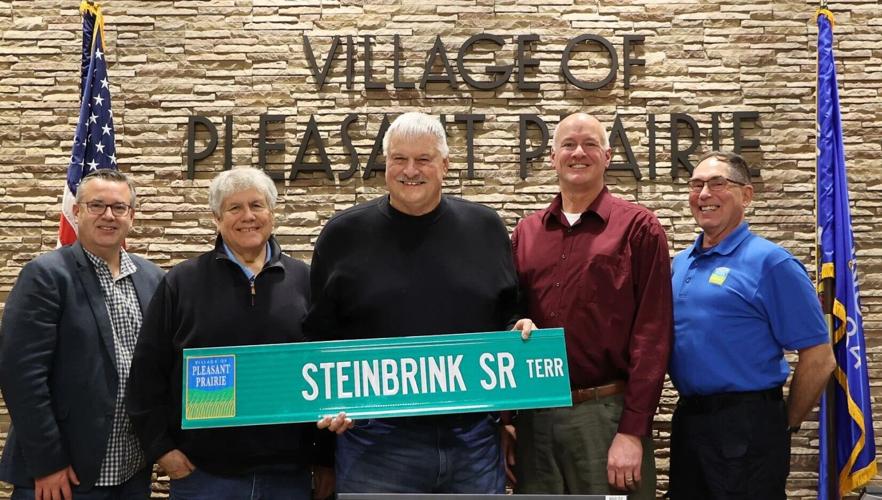When he was a boy, John Steinbrink would ride around on a tractor in a farm field as his dad Peter fished in a pond at its center.
As he circled the field, Steinbrink would watch how farms once in the Town of Pleasant Prairie quietly became part of the City of Kenosha. One by one, it seemed the town he knew was losing not just the land but its character.
“Whenever a development occurred and (people) needed municipal or public services, they would have to annex to the City of Kenosha,” said Steinbrink, reflecting at his final meeting as Pleasant Prairie’s longest-serving president.
He was honored April 14 for four decades of public service, including 30 years leading the village through a transformation from cornfields to what he said some are calling “the envy of the state,” with its successful commercial, corporate, industrial, residential and retail developments.
“If (annexation) would’ve kept up … it would have probably … ended the existence of the Town of Pleasant Prairie,” he said.
Early issues
There were many early issues facing the community. Infrastructure was needed for sewers and water quality, as many areas contained public and private wells contaminated with radium. While naturally occurring, radium can lead to cancer with increased exposure. E. coli was also present in the local water supply.
“This was something you couldn’t believe, at times. But the sewer systems emptied right into the ditch or into field tiles. You know, that was OK when you only had a few houses, but then as the town started to grow, that was not acceptable anymore,” said Steinbrink,
Steinbrink, who worked sunup to sundown as farmer – he grew grain and milked cows — said he wasn’t exactly pining to become involved in local politics. Nevertheless, others approached him.
His father had just died and he was putting in hours running the farm alone when Kenny Barter, a family friend and a former Town Board chairman, and Clarence “Shorty” Willkomm, owner of Mobil Distributing, paid him a visit.
“They encouraged me to run for the Town Board because then (Supervisor) Terry Rice was moving away for work reasons,” said Steinbrink, who had been president of the local Farm Bureau for 10 years.
It wasn’t long before he was convinced to run.
“I always had an interest in history, politics. People knew me, I guess,” he said.
Big changes
In the 1980s, changes came in big ways.
The power plant first came online in 1980. By the latter part of the decade Chrysler Corp. would lay off thousands of workers as the automobile-making giant did away with its plant in Kenosha, threatening to devastate the local economy.
Then Town Board Chairman Tom Terwall and supervisors Don Wruck and Rice hired professionals to “do what we needed to move forward,” Steinbrink said.
That started with the hiring of Michael Pollocoff as Pleasant Prairie’s first town and later village administrator. Pollocoff, who retired in 2017 after 32 years, was later elected to the Village Board in 2018.
The town’s elected leaders would also hire its first public safety professionals, including Police Chief James Horvath and Fire Chief Paul Gilbert.
In 1985, Steinbrink won his first election to the board before becoming village president a decade later. But he wasn’t the village’s first president. Those reins fell to Terwall, who had been the Town Board chairman when the village incorporated in 1989.
Steinbrink said with the late Sen. Joseph Andrea of Pleasant Prairie, Gov. Tommy Thompson and Richard Abdoo, Wisconsin Energy CEO — along with new utility holding legislation — Pleasant Prairie was empowered to develop LakeView Corporate Park.
“Those things really started to form something we never had before,” he said. We had jobs here in the village. We had companies in the village. We had a future in the village.”
The biggest change came when the town incorporated as a village in 1989, with the borders moving south and some residents becoming part of Somers, and others annexed into Kenosha.
Read more at the Kenosha News.

